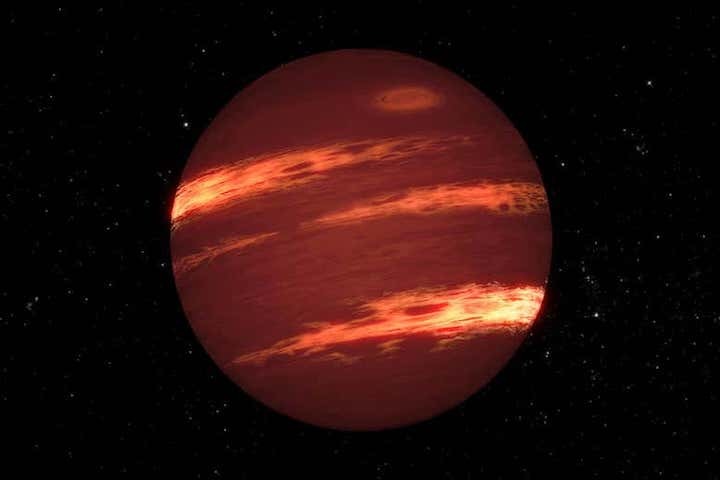10.04.2020

Brown dwarfs, which straddle the line between planet and star, have powerful winds whipping across their surfaces. The method researchers used to measure them could help us figure out what it is like on the surface of some exoplanets.
Known as “failed stars”, brown dwarfs are between 13 and 72 times the mass of Jupiter. They form similarly to stars, but never sustain nuclear reactions in their cores, so they end up behaving in many ways like enormous gas giant planets.
Katelyn Allers at Bucknell University in Pennsylvania and her colleagues analysed one brown dwarf about 34.5 light years away, called 2MASS J10475385+2124234, and made the first direct measurement of wind on these objects. They observed infrared wavelengths using the Spitzer Space Telescope and radio wavelengths using the Karl G. Jansky Very Large Array in New Mexico.
The infrared observations tracked the light from the brown dwarf’s atmosphere, where the researchers found one recurring feature – possibly a cloud or a hot spot – whose movement around the core they could follow over the course of two years. The radio observations traced the rotation of the magnetic field, which is determined by the rotation of the brown dwarf’s interior core.
They found that the core rotates about once every 1.76 hours, and the atmosphere once every 1.74 hours. This means that the winds hurtling eastward across the brown dwarf blow at about 650 metres per second, much faster than those on any planet in our solar system.
With more powerful instruments such as the upcoming James Webb Space Telescope, we might be able to use this same method to learn about the climate and potential habitability of worlds more similar to our own.
“It’s feasible that this could be applied to things like terrestrial planets, and that would be super awesome, to be able to look at a terrestrial planet and be able to tell how fast its winds are blowing,” says Allers. “But that’s definitely quite a ways in the future.”
Quelle: NewScientist
